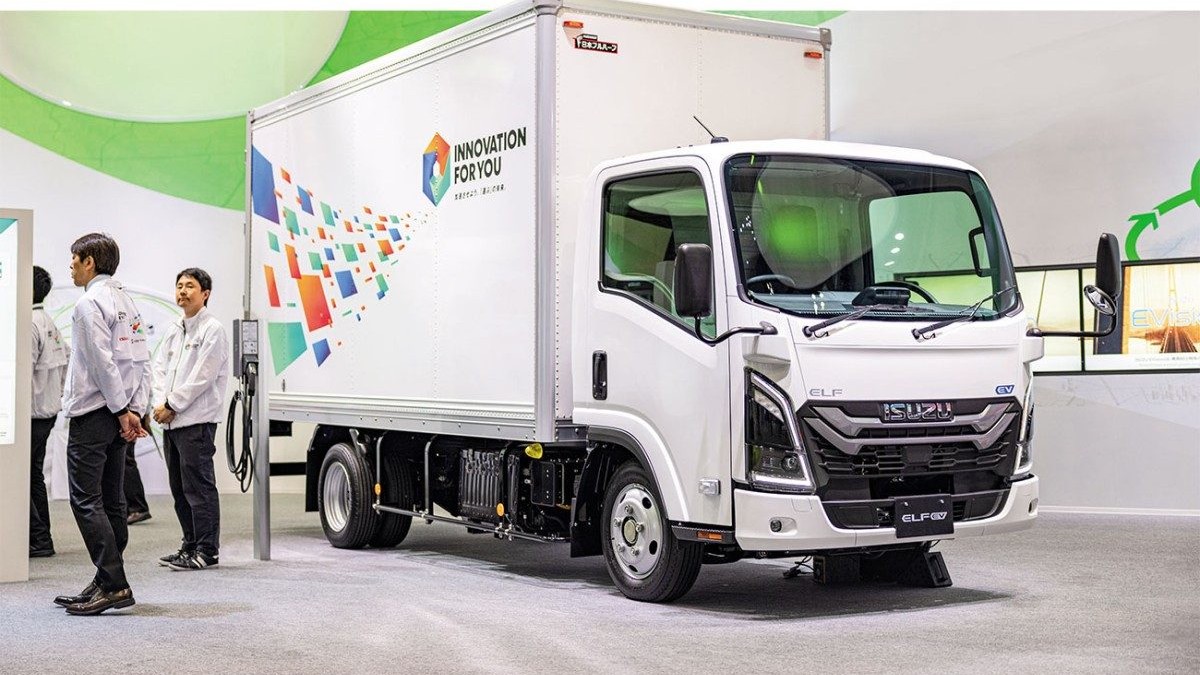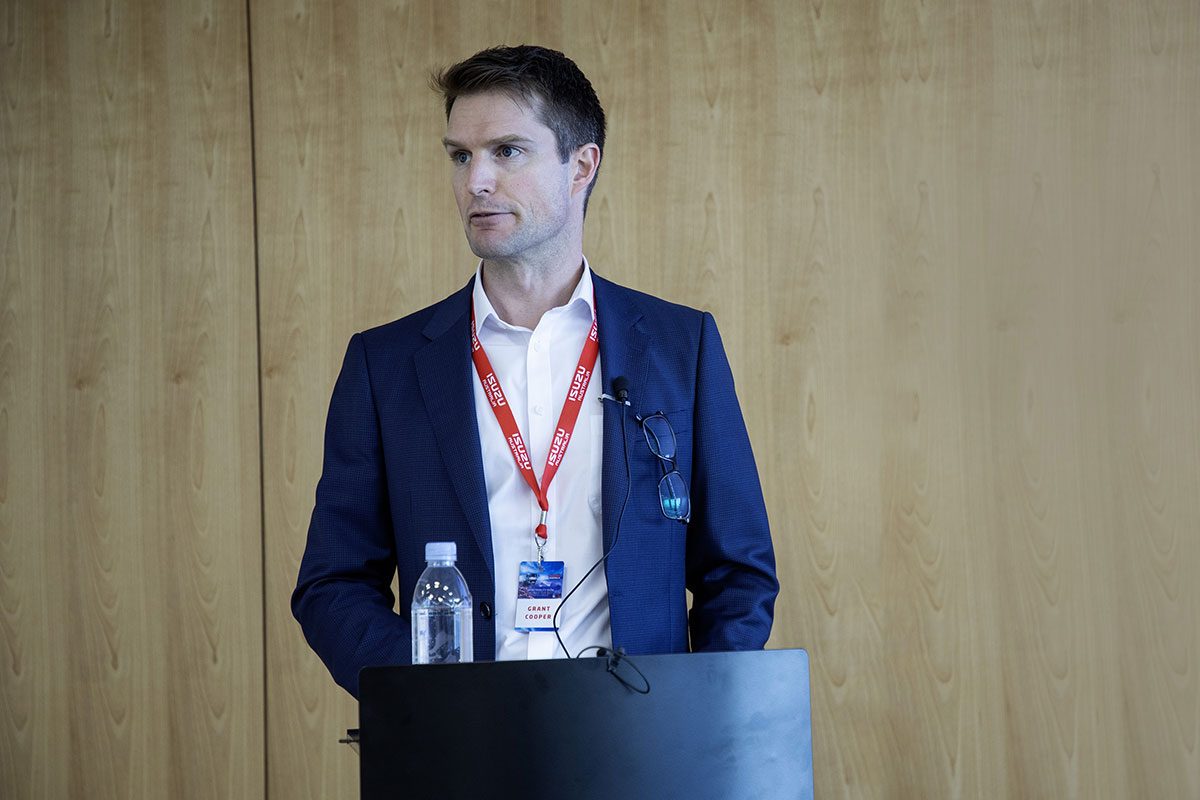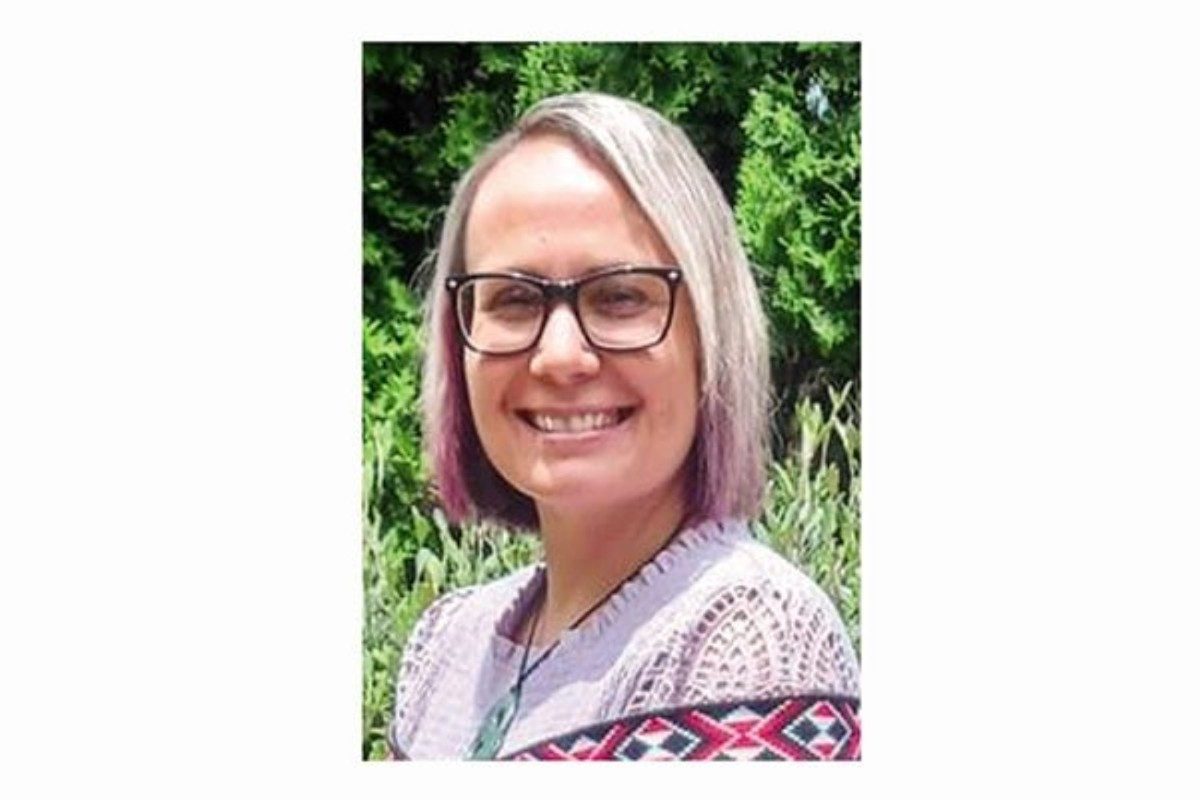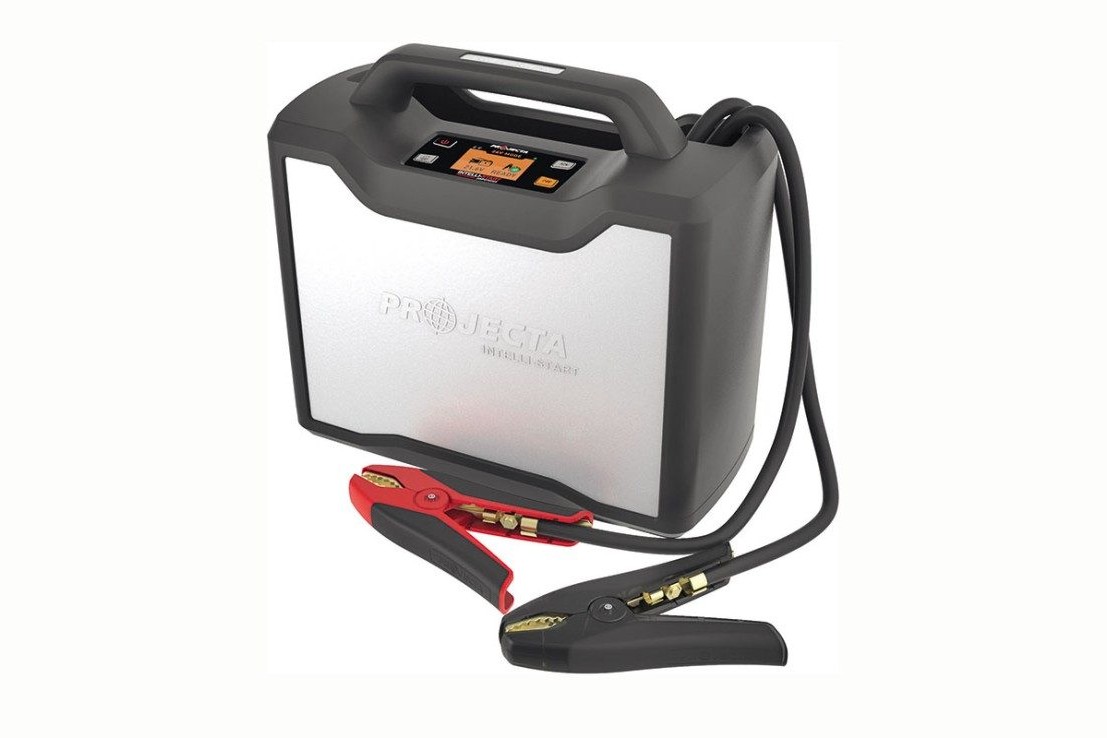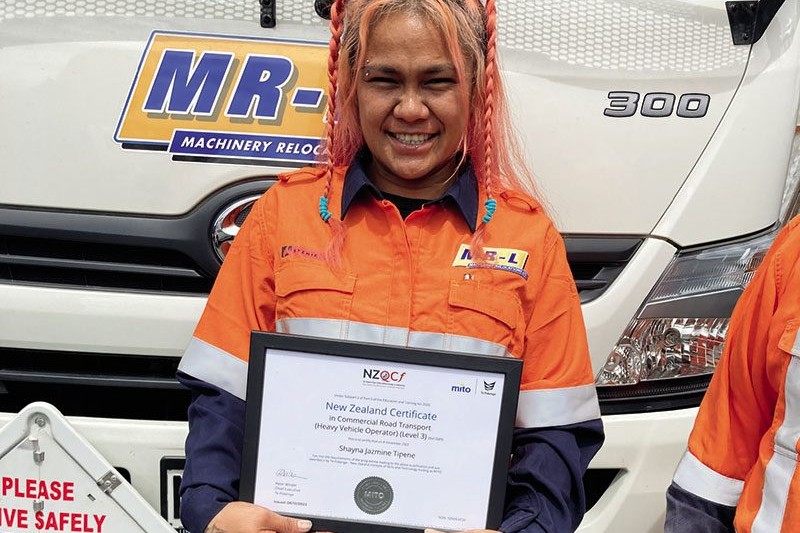Isuzu has a new N and F range on the way here in early 2025, and any which way you look at it, there’s nothing small or medium about news like that. Following on from last issue’s look over the Japan Mobility Show held in Tokyo late last year, we take our first look at Isuzu’s new offerings in what will be one of the most influential commercial vehicle launches of the next 10 years.
Big words you say, but undoubtedly true. While there might be about 40,000 lions left on the planet there are 20 quadrillion ants according to those in the know, and that’s a metaphor for road transport. Although the new GIGA is the most spectacular big ‘Suzie’ by far, there’s no escaping Isuzu’s prowess is at the light, medium, and medium-heavy end of the market. It means a huge catchment for them is people with jobs that require a truck as well as pure trucking people, e.g. tradies, traffic management, refuse and waste, lines companies etc.
When it comes to the easy-to-reach fruit of climate and environmental improvement, the sooner we can get last-mile transport and services into something with low, or no, tailpipe emissions, the better.
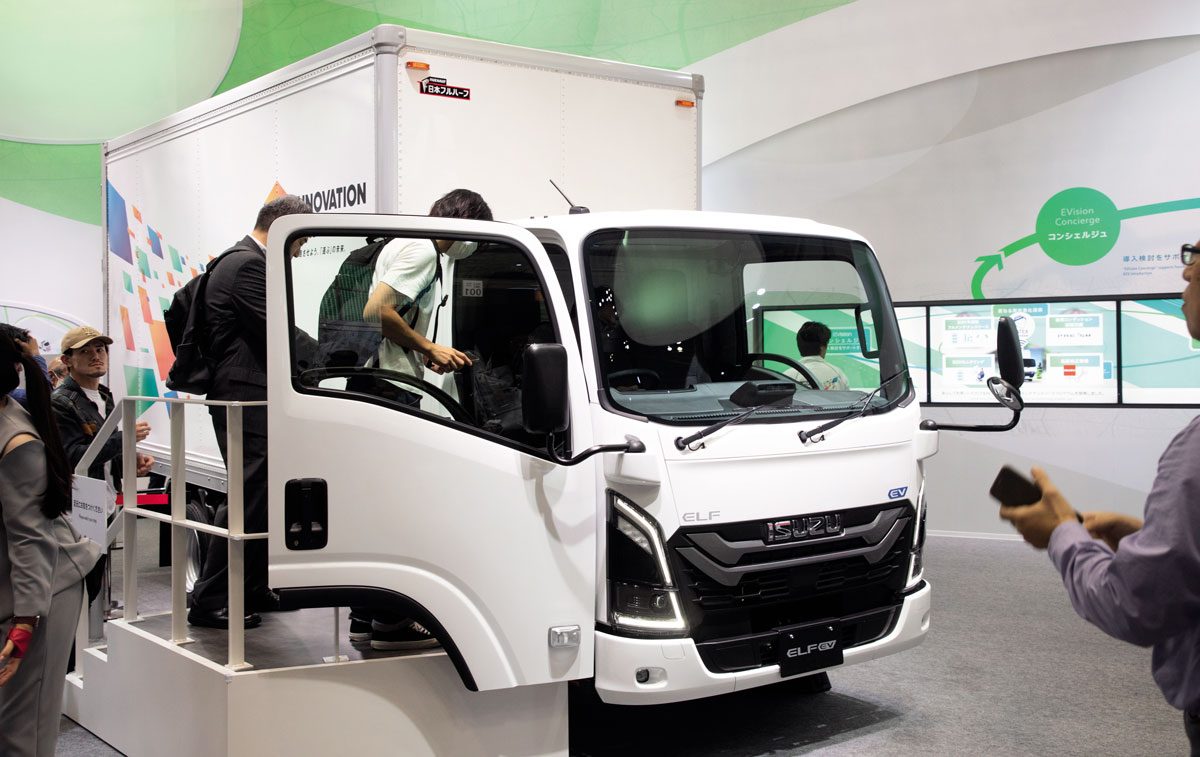
Business author Jim Collins says it a number of times in his writings, you don’t have to be first to reap the benefits. In that vein, Isuzu certainly hasn’t been early to the zero-tailpipe-emissions party, and arch rivals have had products to market for a wee while now. How history writes about that will be interesting, and it might be that supply continuity, capital cost, capability and infrastructure immaturity means the greatest gift the first wave of machines gave us was shifting the mood, acceptance and understanding among the people, rather than market conquest.
The things we do know about any new Isuzu product is it will be voluminous, reliable, and built well. Once upon a time, you would have added uncomplicated, but no OEM outside of Russia, North Korea, and the ‘Stans’ is immune to the march of increasing complexity. Key pillars underpinning the new Isuzus are carbon neutrality, comfort, safety, and you guessed it – connectivity, all on the back of something called I-MACS. No, not a complementary 28ft home theatre with every one sold, rather Isuzu – Modular Architecture and Component Standard. In essence, it is an increased level of platformisation across the model ranges and manufacturing processes the company says will allow more multi-model assembly lines, and more rapid development of models within their overall lifecycle. Think of that in relation to BEV trucks also.
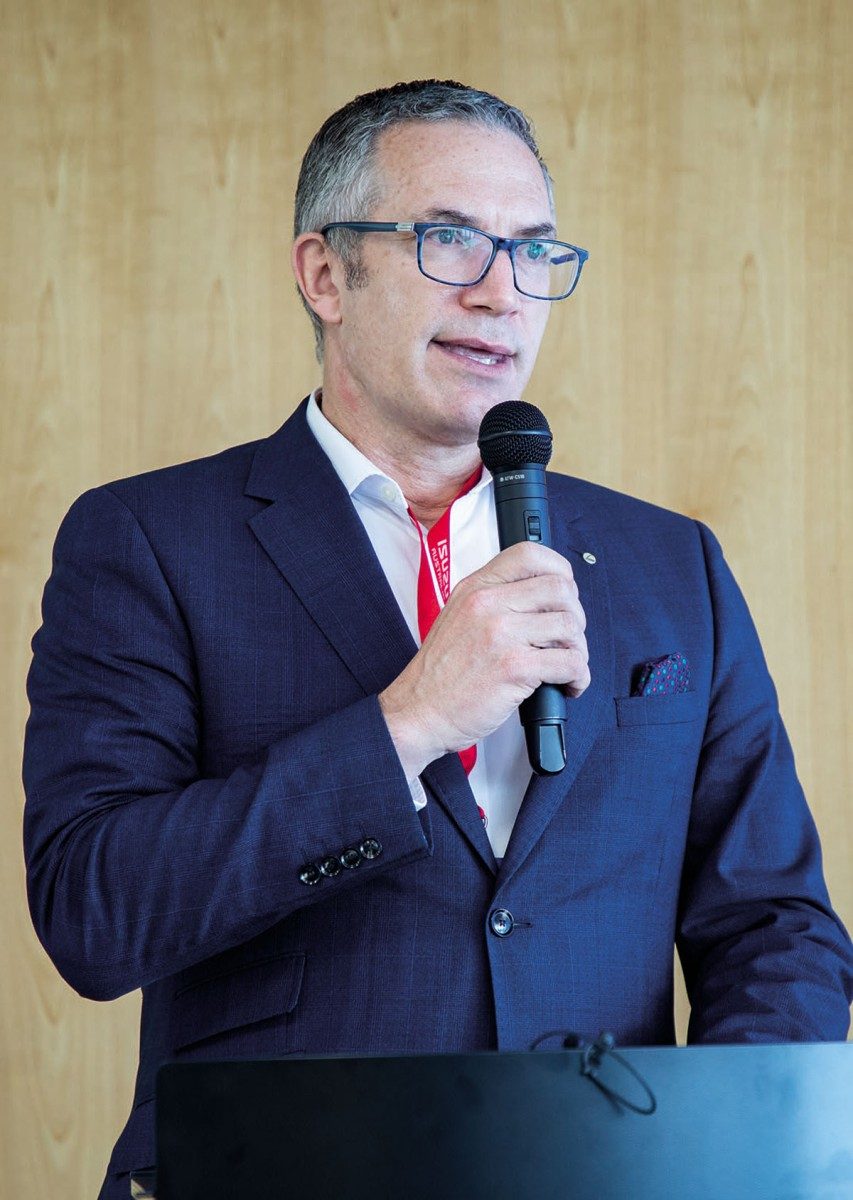
The N and the F of it
Isuzu, the great collaborators, helped write the book on inter-OEM cooperation. There aren’t many who haven’t held hands with them at some point to deliver a better product to market. Cummins, Meritor, Allison – all make an appearance in the new F range at some point and there’s certainly evidence of closer working relationships with UD’s former Scandinavian parent.
The N Series (Elf in Japan) will come with an increased GVM at the top end and two new Australian ADR80/04 and Japan- 16 emissions compliant 4JZ1 engines in 110kW (150hp PS) and 129kW (175hp PS) capacity.
Behind them is a new nine-speed dual clutch AMT Isuzu says will provide improved driveability and economy via the elimination of torque loss, as is generally the case with such technology.
Safety is paramount and the newbies will feature additional cleverness on top of the existing suite of 2023 essentials, namely intersection emergency braking (IEB), full-speed adaptive cruise (FACC) – on two-pedal models, traffic sign recognition (TSR), bi-LED adaptive headlights, and electronic park brake.
With the exception of the new NKR narrow-cab ‘access master’, cabs are largely the same size with doors that open wider retaining a sloping sill line. The smart steering wheel is smaller, and the dash conforms to the modern standard of gauges split by a data screen. Hardwearing, easy-clean plastics, vinyls and soft seat coverings clad a well- put-together driver’s office in black and grey. Workaday classy, I’d call it.
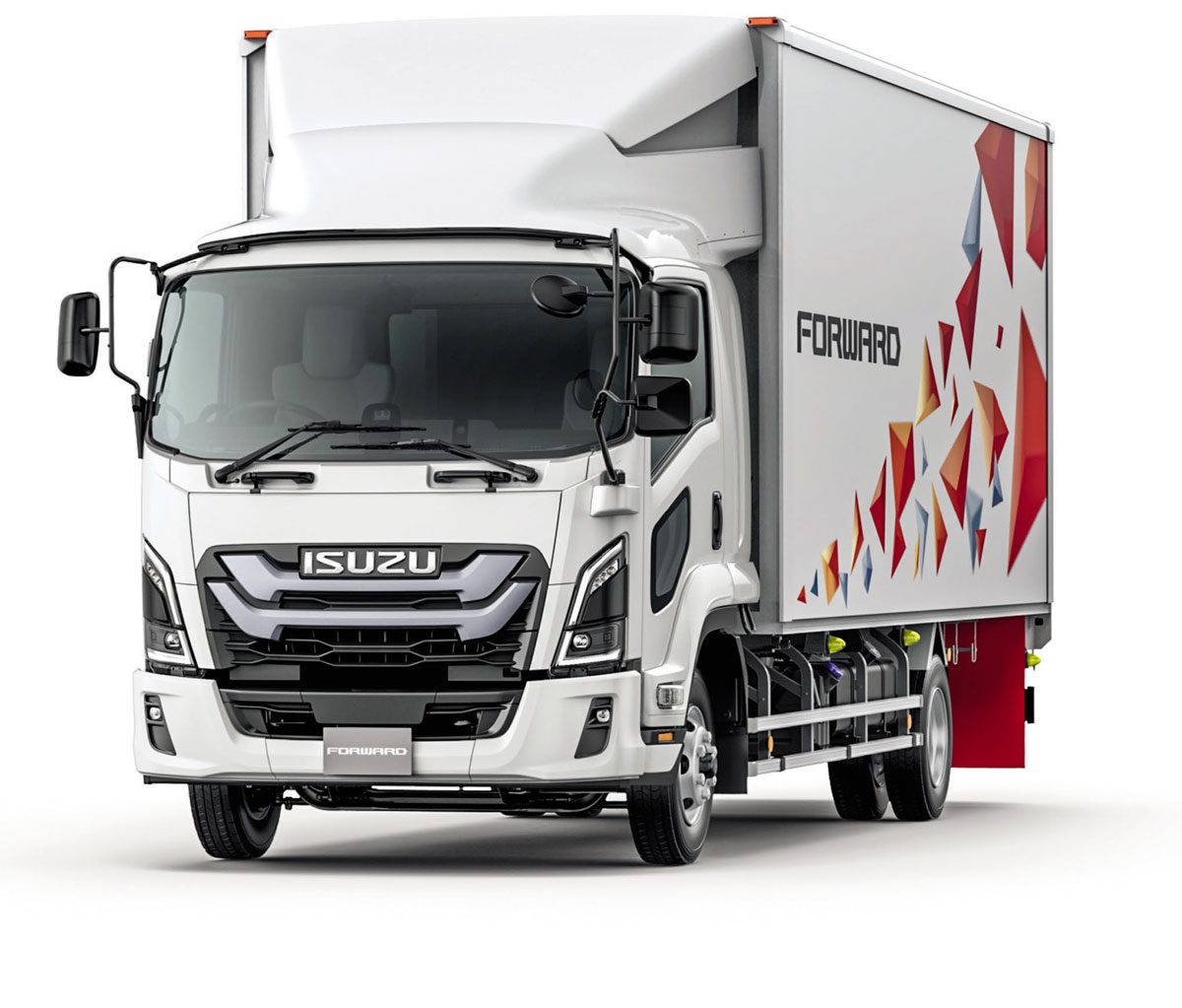

A truck sure to attract a lot of attention when it arrives will be the N Series EV, with Japanese-spec units due in Australia shortly for evaluation, and regional customer trials later this year.
The eNLR at 4.5 tonnes GVM will have a three-battery pack with 60kWh, while the eNPR at 7.5 tonnes GVM will have a five-battery pack at 100kWh. Ports for both normal and rapid charging are accommodated (CCS socket here) up to 600V and 200A. As with all BEVs, the OEM won’t be letting you loose, and there is a suite of consultative and monitoring aids.
With government agencies, contractors and last mile clearly in their sights, brand representation both here and Australia must surely be looking to bring Isuzu’s proprietary EVision battery swap technology down under early on (Refer New Zealand Trucking, Dec 23/Jan 24 Mobility Galore). It’s a ‘trick’, fast-turn-around system and for firms with high usage (and probably deep pockets initially); certainly a no-brainer.
Big brother, the F Series in the 9000kg to 12,000kg bracket, is powered by the N-4HK1 5.2L four-cylinder engines with emissions via a new SCR system for reduced NOx. The 154kW (210hp PS) version will sit under the FSS 4×4, and the 177kW (240hp PS) version the FFR/D and FSR/D. Transmission options include the six-speed torque converter AMT, and six-speed manuals.
The FSR/D, FV, and FTS models will house the 6.7-litre Cummins collaboration DB6A Euro-6 six-cylinder engine with Allison automatic transmissions plus some manual options likely for the Kiwi market.
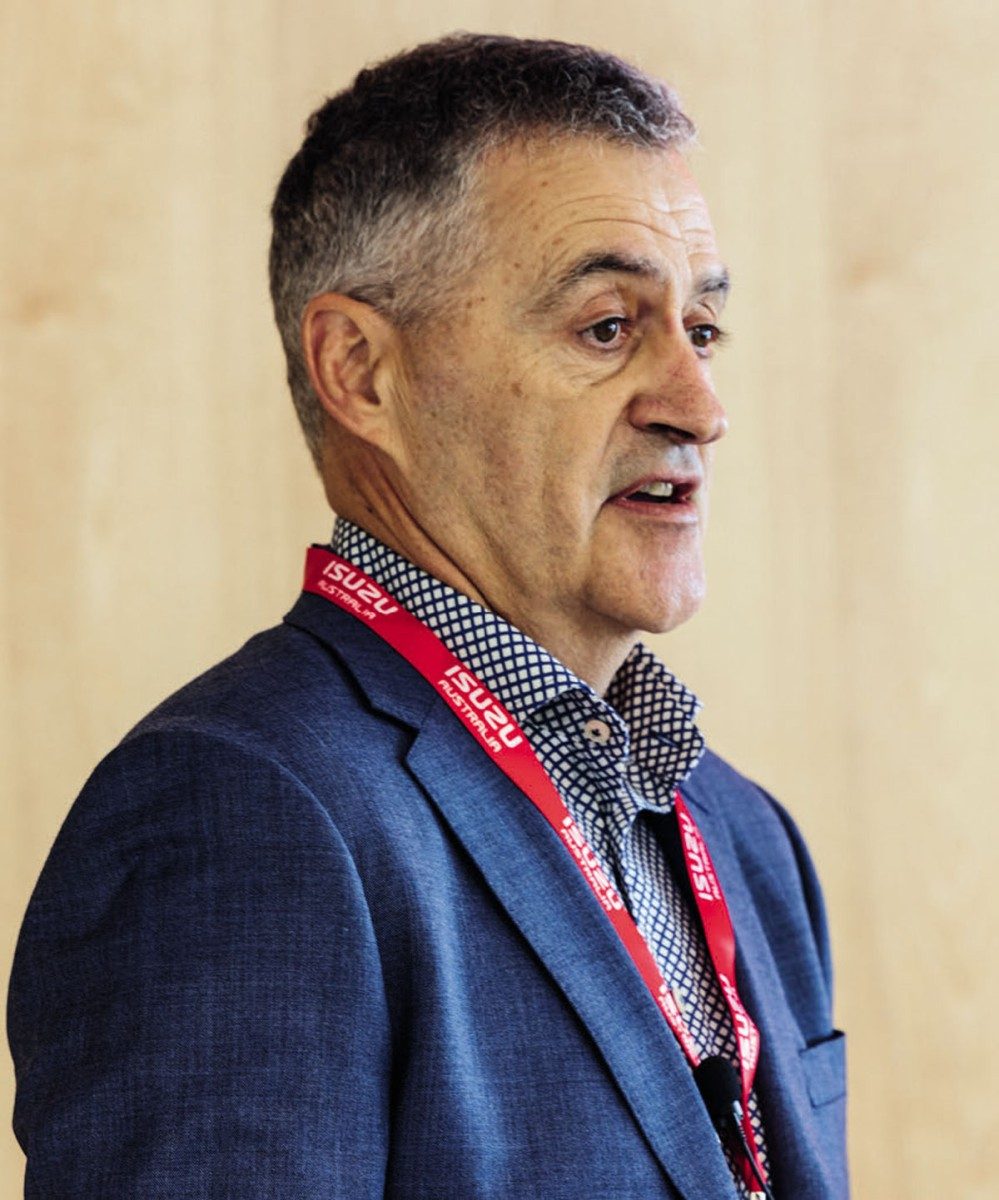
“This is a first-class product, and Isuzu medium-duty truck range has long benefited from Isuzu’s expertise in incorporating industry benchmark components,” says Simon Humphries, product manager for medium and heavy-duty trucks at Isuzu Australia, when speaking at the Japan event.
Spec on the F Series heavy-duty FV models has been boosted with higher capacity steer axles, Meritor full-air disc brakes, and an all new chassis frame.
In FX and FY heavy models (over 40,000kg GCM, under 298kW (400HP)), the Isuzu 6UZ1 Euro-6 (Step C) six-cylinder engine is deployed, and again, Allison HD4430 transmission is the only option there.
The fully redesigned cab sports all the features of the N Series plus an ISRI NTS2 6860 driver’s seat.
The new cabs (N and F) are smoother and cleaner, designed to tie the complete range together in appearance all the way from D Max to GIGA. The strongest visual cues come from the grille fins and new Bi-LED headlights: in the case of the N Series, really big new headlights!
The F Series will bristle with safety also, the four-cylinder variants have the following in addition to the now expected standard: full-speed adaptive cruise control (ACC), traffic sign recognition (TSR) and adaptive driving beam (ADB). The FRR/D and FSR/D models also get auto lighting system (ALS) and auto rain-sensing wipers (AWS). FSS 4×4 will gain advanced emergency braking (AEB) and electronic stability control (ESC) in some applications specific to crew cab models only.
FRR and FRD get full air braking and EBS and CAN electronic architecture for better integration and control of ancillary and body builder equipment.
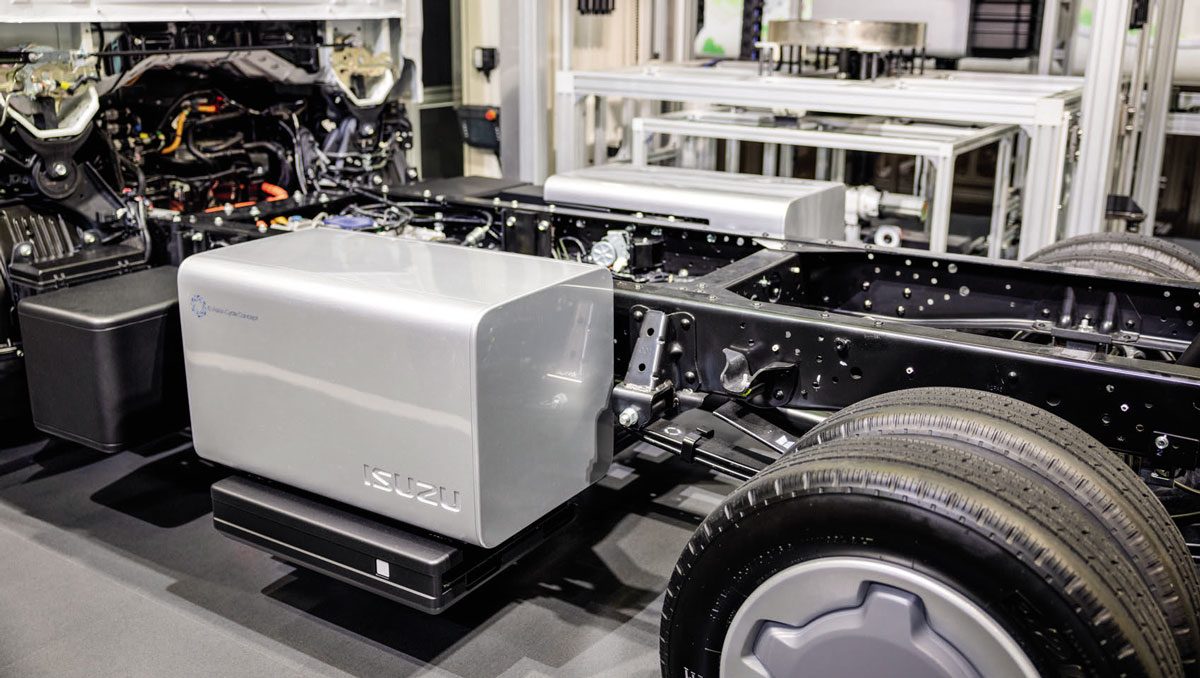
Kiwi implications
We asked Isuzu New Zealand GM Dave Ballantyne about timing for arrival in New Zealand. “We’re very excited about the new range. We’re working closely with colleagues in Japan and Australia and will have more to share on exact timing toward the middle of the year.”
Although both countries represent the product in different ways – Isuzu Australia is an outpost of Isuzu Motors Japan and in New Zealand Isuzu is marketed through General Motors – Dave said the two countries work closely together as New Zealand’s parts supply comes ex-Australia.
“We get great support and training from the Aussie crew and over the past couple of years there has been a very close working relationship. Our national product and aftersales manager, Bruce Clarke, works very closely with the technical team in Australia on nuances between the two markets and regulatory requirements.”


